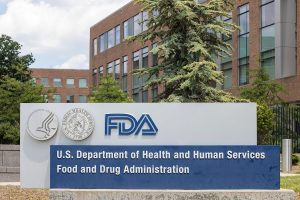Coronavirus deaths in the United States hit another daily record on Tuesday, with 4,400 Americans succumbing to COVID-19 in the last 24 hours.
The United States already has the world’s highest death tally by a wide margin, and is only about 20,000 shy of 400,000 just one month after the country crossed the 300,000 threshold, The New York Times reported.
In a change that illustrates the level of worry U.S. health officials have about containing the coronavirus in the coming months, U.S. Health Secretary Alex Azar said Tuesday that the federal government would now release all available vaccine doses and told states to vaccinate every American aged 65 and older.
“This next phase reflects the urgency of the situation we face,” he said. “Every vaccine dose that is sitting in a warehouse rather than going into an arm could mean one more life lost or one more hospital bed occupied.”
A third coronavirus vaccine may soon join the Pfizer and Moderna vaccines that have already been approved for emergency use: Johnson & Johnson said Tuesday that it plans to announce trial results on its one-dose vaccine soon, though the company probably won’t be able to provide as many doses this spring as it first promised the federal government because of production delays, the Times reported.
If the vaccine can strongly protect people, as some scientists expect, only one shot would be required, making it far easier for local health departments and clinics to vaccinate residents. Its vaccine can also stay stable in a refrigerator for months, whereas the other two vaccines have to be frozen, the Times reported.
Dr. Marcus Plescia, chief medical officer for the Association of State and Territorial Health Officials, said state health officials were clearly excited about Johnson & Johnson’s one-dose vaccine.
“You can get it and you’re done,” he said. “Everybody is eager to have it out there. It has a lot of potential.”
But the hope of a third vaccine that can guard against COVID-19 infection is dampened by production lags. In the company’s $1 billion contract with the federal government, Johnson & Johnson pledged to have 12 million doses ready by the end of February, ramping up to a total of 100 million doses by the end of June, the Times reported.
However, federal officials have been told that the company has fallen as much as two months behind the original production schedule and won’t catch up until the end of April, when it was supposed to have delivered more than 60 million doses, two people familiar with the situation who were not authorized to discuss it publicly told the Times.
Even if Johnson & Johnson’s vaccine pans out, it won’t be enough to completely quell the pandemic, Plescia told the Times. He predicted that state health departments would need a total of four vaccines available in the next six months if they hope to reach their goals of offering a vaccine to every American who wants one.
COVID vaccine recommended for all Americans over 65
On Tuesday, the Trump administration announced it would recommend a coronavirus vaccine for every American over 65, as it tries to speed up the nation’s vaccine rollout.
Health officials also recommended that coronavirus vaccines be given to all adults with pre-existing conditions that make them more vulnerable to severe COVID-19 infection, the Times reported.
Right now, the vaccines are largely being distributed to people in the highest-risk categories, including frontline health care workers and older people and staff in nursing homes. More community centers and pharmacies will also be added to the list of places where people can be vaccinated, the Times reported.
The HHS will also no longer hold back vaccine doses to ensure that those who receive a first dose will have a second dose in reserve. Instead, all existing doses will be sent to states to provide initial inoculations, the Times reported.
Just days ago, President-elect Joseph Biden’s aides said his administration would make a similar adjustment by using more of the already procured vaccines for initial doses. Biden’s team said it would aim to distribute the doses more quickly at federally-run vaccination sites in high school gyms and sports stadiums, and send mobile units to reach high-risk populations.
As of Tuesday, nearly 27.7 million doses of coronavirus vaccines have been distributed and over 9.3 million have made their way into patients’ arms, the U.S. Centers for Disease Control and Prevention reported. That falls far short of the Trump Administration’s original goal of vaccinating 20 million Americans by Jan. 1.
More infectious COVID variant now seen in 10 states
The more contagious coronavirus variant that has brought Britain to its knees in recent weeks is showing signs that it is spreading widely throughout the United States, health officials and experts say.
Minnesota joined Indiana, Texas, Pennsylvania and Connecticut, California, Florida, New York, Georgia and Colorado this week with reports of variant cases, the CDC reported. A total of 72 variant cases have now been reported in the United States. A South African variant that is also more contagious hasn’t been confirmed in this country yet.
Scientists also say they cannot rule out the possibility that an undetected U.S. variant is accelerating the rapid spread seen in recent weeks.
“It could be — a possibility — that we have our own mutant that’s being more easily transmissible,” Dr. Anthony Fauci, director of the National Institute of Allergy and Infectious Diseases, said Monday. “We don’t know. We’re looking for it. . . . If you look at the slope of our curve, which is very steep, it looks a bit like the curve in the U.K.”
The U.S. Centers for Disease Control and Prevention said its strain surveillance program is on track to more than double the number of genomic sequences being uploaded to public databases by the end of the week.
“The general consensus is there’s no single variant driving current U.S. cases. That said, we need to be on the lookout for these variants of concern,” Duncan MacCannell, chief science officer with the CDC’s Office of Advanced Molecular Detection, told the Washington Post on Monday.
Other scientists agree.
“We don’t see any evidence of a particular variant ‘outrunning’ others,” Kristian Andersen, an immunologist at the Scripps Research Institute, told the Post. “That’s not to say there isn’t one, but we haven’t seen any evidence of it so far and we are looking, just not enough.”
Andersen said the British and South African variants will likely become dominant in the United States within months. “Our mitigation efforts are woefully insufficient to deal with those,” he warned.
While the variants show no signs of being more deadly than the original version of the virus, they could send more people into hospitals, up the number of COVID-19 deaths, and prolong the effort to reach herd immunity in this country, the Post reported.
“We are in a race against time,” said Jennifer Nuzzo, an epidemiologist with the Johns Hopkins Center for Health Security in Baltimore. “We need to increase our speed in which we act so that we don’t allow this virus to spread further and allow this [British] variant to become the dominant one in circulation. The clock is ticking.”
A global scourge
By Wednesday, the U.S. coronavirus case count passed 22.9 million while the death toll passed 380,000, according to a Times tally. On Wednesday, the top five states for coronavirus infections were: California with over 2.8 million cases; Texas with over 2 million cases; Florida with more than 1.5 million cases; New York with over 1.1 million cases; and Illinois with more than 1 million cases.
Curbing the spread of the coronavirus in the rest of the world remains challenging.
In India, the coronavirus case count was nearly 10.4 million by Wednesday, a Johns Hopkins University tally showed. Brazil had over 8.2 million cases and over 204,600 deaths as of Wednesday, the Hopkins tally showed.
Worldwide, the number of reported infections passed 91.7 million on Wednesday, with over 1.9 million deaths recorded, according to the Hopkins tally.
More information
The U.S. Centers for Disease Control and Prevention has more on the new coronavirus.
SOURCES: New York Times; Washington Post
Source: HealthDay
Copyright © 2025 HealthDay. All rights reserved.











-300x169.jpg)




